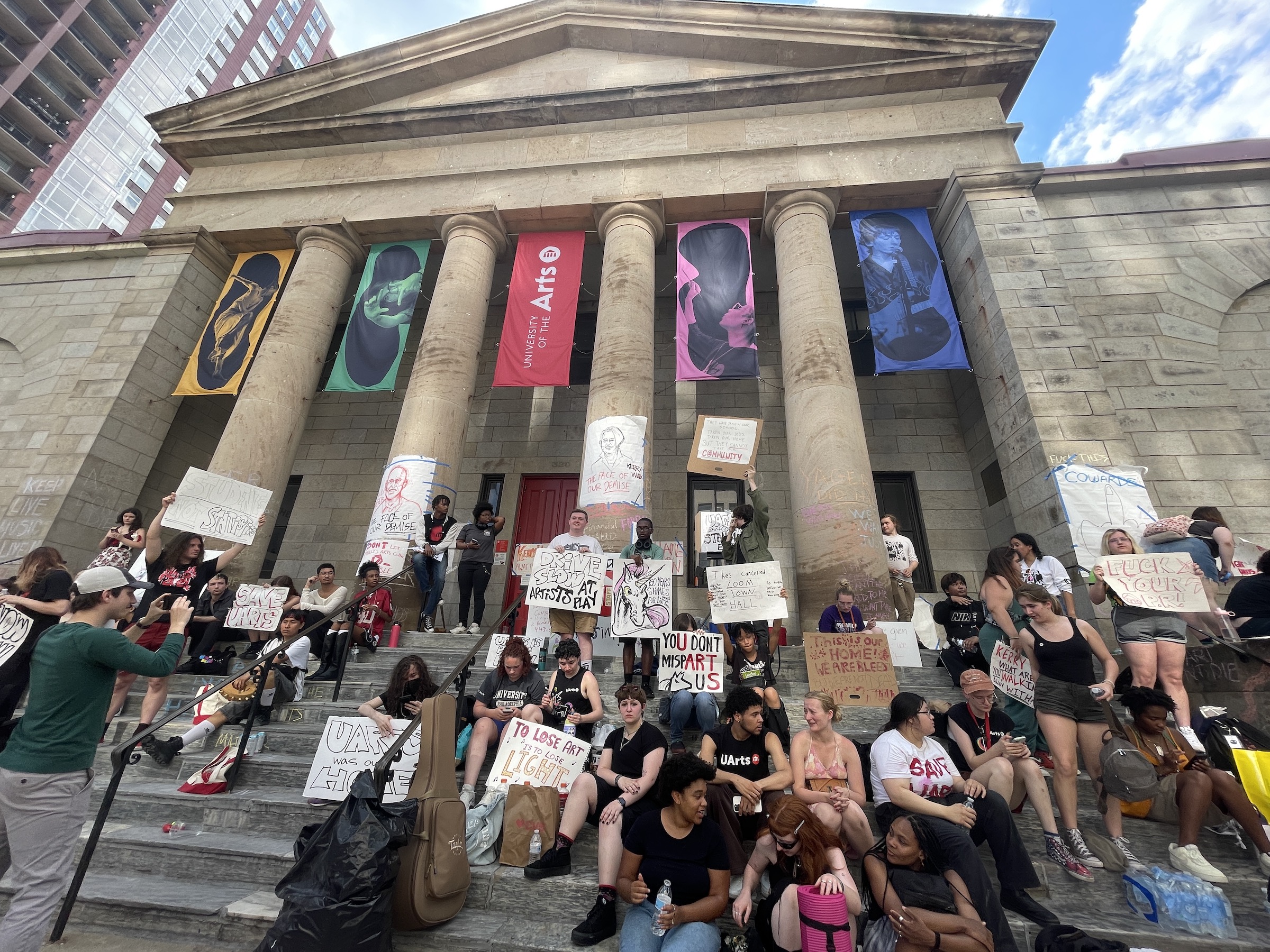Philadelphia’s University of the Arts (UArts) filed for bankruptcy on Friday, September 13, just a few months after the 148-year-old private arts college abruptly announced it would permanently shutter its doors due to a perilous financial state.
While the filing did not clarify the causes behind the school’s economic ruin, it did reveal that UArts’s estimated assets and liabilities currently stand between $50 million and $100 million. It also showed that the school’s attorney, Richard G. Placey of Delaware’s Montgomery McCracken Walker and Rhoads LLP, has been paid more than $1.1 million in legal work thus far.
Coming on the heels of a failed merger with Temple University, the bankruptcy petition begins the process through which UArts will liquidate its assets to repay its debtors. According to the filing’s documents, the school currently owns nine administrative buildings, residential halls, and performing arts venues in the heart of Philadelphia, which collectively value upwards of an estimated $87 million.
The court petition is just the latest development in a growing nest of legal troubles since school officials announced in late May that UArts had lost its accreditation from the Middle States Commission on Higher Education and would be closing on June 7. Shortly succeeded by the last-minute resignation of the school’s President and Chief Executive Officer Kerry Walk, the unexpected news led to hundreds of terminated UArts employees and student transfers to nearby schools including Temple University, Drexel University, and Moore College of Art and Design. So far, the fallout has included multiple class action lawsuits, unfair labor practice charges, and an ongoing investigation by Pennsylvania’s Attorney General Michelle Henry.
“Regretfully, this is not beneficial to students and staff and leaves them with more questions than answers about next steps for their education and employment,” Henry said in a statement provided to Hyperallergic, adding that she was notified the school was filing for bankruptcy because “it has been unable to obtain alternative funding.”
“We will continue to monitor the situation and ensure that all endowments are properly dispersed,” Henry said.

Unionized UArts employees have continued to admonish school leaders’ disastrous handling of the closure in a collective statement published on Friday after the bankruptcy filing.
“This filing comes as former students, staff and faculty continue to struggle with the damage done to their educations and careers, and while the UArts Board has neglected its legal, contractual, and moral obligation to negotiate severance payments for workers affected by UArts’ collapse,” read the statement posted by United Academics of Philadelphia on Instagram. The union is currently suing the college for failing to bargain with workers and negotiate terms for severance. It piles onto another suit by staffers that argues the school still owes workers 60 days’ worth of pay and benefits, as mandated by the Worker Adjustment and Retraining Notification Act of 1988.
Kyle Crichton, a UArts alumnus and former adjunct film professor, told Hyperallergic that although he was disappointed by the bankruptcy filing, he wasn’t surprised.
“Everything sort of showed that that was going to be what they were going to do next,” Crichton said, citing Temple University’s recent announcement that it would not be pursuing a merger with UArts. Already, he said, Philadelphia is feeling the ripple effects of the school’s closure, which has left a massive hole in the city’s arts community.
“A lot of people left,” he said. “The students who would have grown into this artist community, who would have stayed or at least come back, like myself — they’re not in Philly anymore.”
Former UArts students still in Philadelphia are also feeling out of place, like fourth-year film major Spencer Jones, who was one of more than 330 undergraduates to transfer to Temple University this semester. He told Hyperallergic he is the only film major in his UArts class to enroll at the school, which is a 25-minute commute via public transit, a far cry from the five-minute walk he used to take from his apartment.
“A lot of the UArts students that went to Temple after the closure are having a hard time adjusting to the rigid structure of Temple as opposed to the complete artistic freedom that we had at UArts,” Jones said.
“Everybody’s sharing the consensus that it’s fine,” he added, “but it’s not UArts.”

